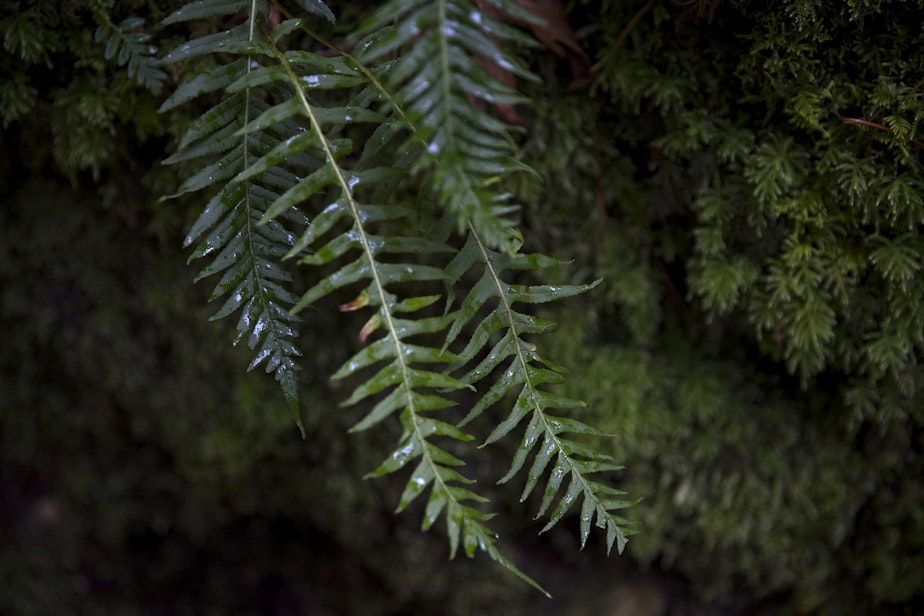'April showers bring May showers': Earth Day with WA state Climatologist Nick Bond

Here in the Pacific Northwest, every day feels like Earth Day.
We sure love our evergreen forests, abundant waters and majestic mountain ranges.
There's even a Twitter account dedicated solely to whether you can see Mt. Rainier.
President Joe Biden is in Seattle to celebrate Earth Day with an executive order to protect old-growth forests from wildfires.
Some climate activists are less than enthused by his visit.
But Washington state Climatologist Nick Bond is hopeful. He'll be listening for the president to acknowledge the work done in Washington state and across the Pacific Northwest. And he hopes to hear more about the Biden administration's plan to get naysayers on board with reversing course on climate change.
Bond spoke with KUOW's Angela King.
This interview with Nick Bond has been edited for clarity.
Sponsored
Angela King: Things have kind of settled down a bit this week. But earlier in the month, the Seattle area warmed up to the low 70s. The National Weather Service says that normally doesn't happen around here until June. Then a couple of weeks ago, it snowed. Places like Auburn saw some huge flakes. And we know you're a climatologist, not necessarily breaking down the day-to-day weather patterns, but are these just flukes? Or are the climate tea leaves really telling us something right now?
Nick Bond: Yeah, as we've talked about before, we often have relatively cool and unsettled weather in the late winter during La Niña. This time, we just had to wait until April to get into that pattern. For the remainder of the month, we'll have some showers at times. And you know, around here the expression is April showers bring May showers. So, don't put away the umbrella.
Let's talk about the snow in the mountains. The snowpack got a boost from some of the recent storms. So, how are we looking for summer?
For most of our mountains, we're in pretty good shape, a bit above normal. The central Puget Sound region happens to have the greatest amounts, relative to normal. The southeast part of the Cascades that kind of feed the Lower Yakima Basin is still just 76% of normal, but the upshot is that most of our larger streams should have at least decent flows this summer.
That being said, there are some places in the state and lower elevations of Eastern Washington that are still suffering from some long-term rainfall deficits. And so, the dry-land agriculture, wheat, barley and other crops like that, and some of the pastures and rangelands are going to be under stress this summer.
Sponsored

Well, speaking of summer: Summer is now 60 days away, begins on June 21. I know some folks are looking forward to the warmer weather. But last summer's deadly heatwave has other people really worried that we could see a repeat. What do the latest forecast models you've been looking at say about that?
I'm glad you brought that up about last year's heatwave, because it's important to realize that it was a freak event. The chances of something like that, something so severe happening again this summer are very small.
Now, as the climate continues to warm, the very worst heatwaves will be much more intense. But even by the middle of this century, present projections suggest that temperatures as hot as what occurred last year will only come along once every five or 10 years.
Even as a "freak" occurrence, though, those things seem to be happening more frequently.
Sponsored
That's true. And we've seen what can happen. But it was such an extreme that our best science suggests that something like that won't come along very often at all.
Okay. Well, as we mentioned, the president is in town for Earth Day today. Anything in particular you're hoping to hear from President Biden or any issues you hope his administration will address?
You know, it's a tall order. But somehow, this administration needs to convince those who are objecting to taking action, that the longer we drag our feet about climate change, the more difficult and costly it's going to be.





